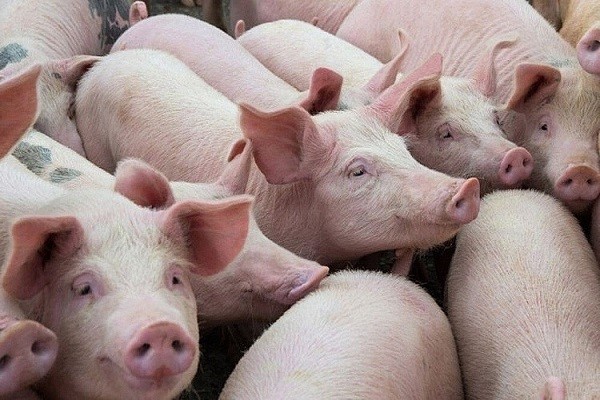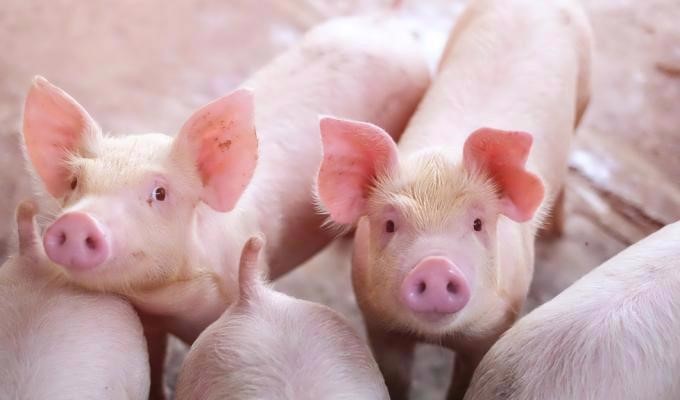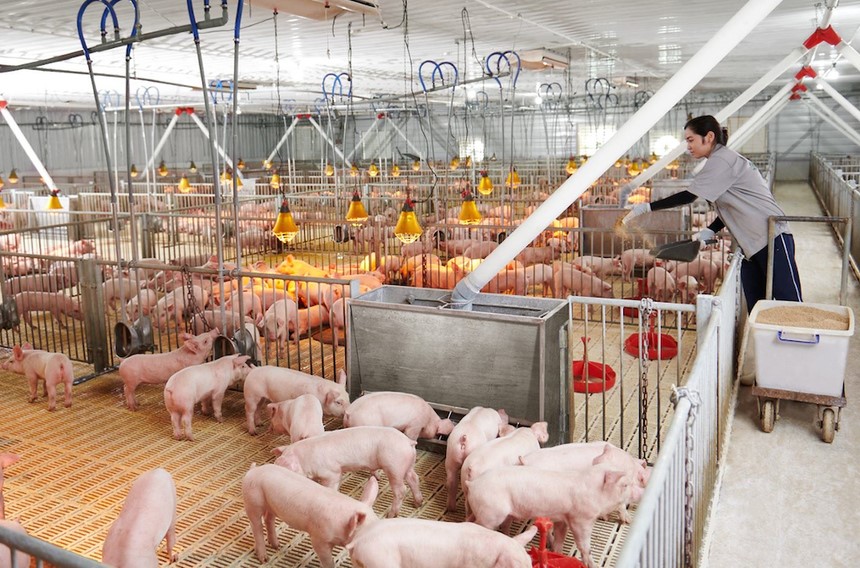The steps of artificial insemination for sows – an effective method to improve reproductive performance and the quality of breeding pigs.
Nowadays, to improve the reproductive performance of sows, artificial insemination techniques are gradually being widely applied in pig farming. Artificial insemination for pigs helps improve reproductive performance, increase productivity and economic efficiency for the farm.
1. FIRST, TO HAVE A PRODUCTIVE HERD OF PIGS, THE IMPORTANT THING IS TO CHOOSE THE RIGHT, PRODUCTIVE AND QUALITY PIG SEMEN.
 Image of sow farming
Image of sow farming
2. DETERMINE THE RIGHT TIME FOR INSEMINATION IN SOWS
First mating (mating gilts): The necessary and sufficient condition for mating gilts is that the pigs must be of sufficient age and weight.
The age for first mating for domestic sows is 7 – 7.5 months old and for crossbred sows (foreign x domestic) and foreign sows is 7.5 – 8 months old. Suitable weight for mating: Mong Cai sows are 50 – 55 kg, crossbred sows (Yorkshire/Landrace x Mong Cai) are 75 – 85 kg, foreign sows are 110 – 130 kg. For all pig breeds, never mate immediately during the first heat, because the pig’s body is not fully developed, the number of eggs released during the first heat is low, etc. if mating, the number of offspring will be low. Should mate when the gilt has gone through 2 or 3 heat cycles.
Mating sows (pigs that have given birth from the second litter onwards): Sows will be in heat again about 4-6 days after weaning. It is necessary to monitor, observe carefully and determine the exact time of lethargy in the sow to prepare for mating. When detecting lethargy in the sow, do not mate immediately like with gilts, but mate the first time within 10 – 12 hours from the time the sow is lethargic. To ensure that the sow gives birth to many piglets, the second mating should be repeated about 12 hours after the first mating. It is necessary to record the mating date to predict the day the pig will give birth.
3. ARTIFICIAL INFERTILIZATION TECHNIQUE
3.1. ABOUT TOOLS
You need to fully prepare the following tools: boar semen, catheter, toilet paper, lubricant (vaseline), gloves, etc. Boil the catheter in boiling water for 15 minutes, drain, and let cool.
3.2. FOR SOWS
– Before mating, the sow must be cleaned thoroughly, especially the genitals.
– Stimulate the sow for 3-5 minutes in the style of a male pig’s courtship by sitting or leaning on the sow’s hand, placing a sandbag on her back.

3.3. IVF PROCEDURE
– Lubricate the vas deferens.
– Warm the semen to 35 – 370C by holding the semen bottle in the palm of your hand for a while.
– Incise the vulva and insert the vas deferens into the sow’s genital tract at an angle of 30 – 450 above the dorsal plane and gently rotate the vas deferens counterclockwise.
– Gently pull out and push in to bring the vas deferens to the cervix (about 25 – 27cm).
Continue to stimulate the sow to insert the vas deferens into the cervix (there will be a heavy feeling when the vas deferens enters the cervix).
– Insert the warmed vial into the vas deferens and inject the semen.
– Continue to stimulate the sow and let the semen flow slowly into the uterus (make sure the semen bottle is higher than the sow’s buttocks). The most suitable time for insemination is about 5 – 10 minutes.
– After insemination, remain seated, lean your hand or place a sandbag on the sow’s back for another 3-5 minutes to let all the semen flow in, then slowly pull the insemination catheter out of the reproductive tract clockwise and pat the sow’s buttocks hard.
– When checking whether the semen has moved to the upper part of the sow’s reproductive tract by lowering the vas deferens lower than the vulva, if the semen does not flow out, it is good.
– Clean the tools and record the necessary information in the mating book. Monitor the results in the next estrus cycle.
3.4. IN ARTIFICIAL IN ARTIFICIAL INSEMINATION TECHNIQUES FOR SOWS, THE FOLLOWING VERY IMPORTANT POINTS SHOULD BE NOTED:
Before mating the sow, it is necessary to examine the semen. Only when it meets the standards can the sow be mated.
– Time from semen collection to mating: the shorter this period is, the better. If this period is longer, the sperm’s vitality will decrease and the ability to conceive will be poor. Semen in liquid form is mostly only capable of conception for a maximum of 2 days (48 hours) if stored properly. Therefore, all doses of semen produced should be used within 48 hours.
– Storage temperature: most suitable 18 – 200C. It is necessary to reduce the temperature fluctuation to the lowest level, then the vitality of sperm will be better.
– Sperm motility: One of the factors that causes loss of sperm motility is a “C” shaped tail, indicating that the sperm has encountered a dangerous external environment. For example: Excessive changes in temperature, pH, osmotic pressure, toxins, etc. curved tails are often accompanied by cytoplasmic droplets when moving. This type of sperm is incapable of conception. If a dose of semen has 20% of this type of sperm, it is incapable of conception.
– It is necessary to warm the slide when examining sperm: Sperm is very sensitive to temperature. A difference of only 20C between the temperature of the semen and the temperature of the slide when examining can cause shock to the sperm and the quality of the assessment will be incorrect and inaccurate. When preparing the slide for examination, it is necessary to ensure that the temperature of the semen and the temperature of the slide are the same. To evaluate newly collected semen, the slide must be warmed to a temperature of 35 – 370C, equivalent to the temperature of semen.

4. FACTORS AFFECTING FERTILIZATION PERFORMANCE
Health of boars and sows: Healthy pigs, free of disease and with normal estrus cycles will have a higher fertilization rate.
Semen quality: Good quality semen with high sperm density and fast sperm motility will help improve the ability to fertilize. The shorter the time from semen collection to insemination, the better. Semen is only capable of fertilizing within 48 hours.
Timing of insemination: Insemination at the appropriate time during the sow’s estrous cycle will help increase conception rates.
Insemination technique: The operator needs to have skills and experience in insemination and insemination to ensure no harm to the pig and increase the success rate.
Artificial insemination in pigs plays a very important role in crossbreeding, breeding, genetic improvement of breeds, contributing to improving the quality of breeding pigs. Artificial insemination for sows helps achieve high conception rates, the desired quantity and quality of piglets, thereby bringing high economic efficiency. At the same time, sows will receive semen from selected good boars, no need to transport boars, no restrictions on pig size difference, one semen collection can be used to mate with many sows.
From selecting quality semen to determining the timing of breeding, this guide will help farmers master artificial insemination techniques and important notes in pig farming.
